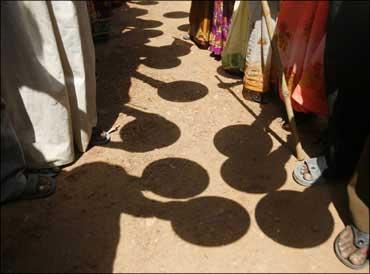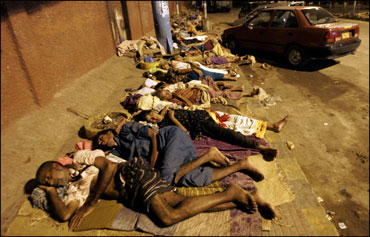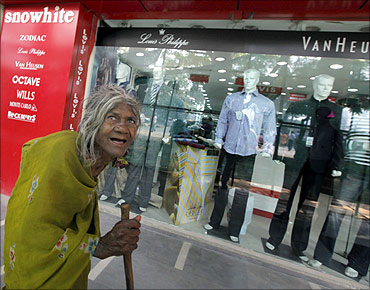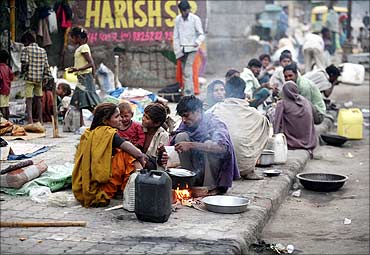 | « Back to article | Print this article |
Calculating poverty: How India does it
Can you live on Rs 32 a day in Indian cities? This is what everyone is asking after the Planning Commission came up with this figure in its revised estimate of people living below the poverty line.
How about living on Rs 26 a day in a village? Impossible, you say. That's the debate that has been going on in India for the past few days.
There is certainly something missing with the way poverty is measured in India. Fortunately, the government is not unaware of it and has taken many initiatives to assess the correct poverty line.
Click NEXT to read more...
Calculating poverty: How India does it
Though in the end, it buckles and chooses the most optimistic number. There are several reasons why the government prefers to take an optimistic view.
Let's first understand how poverty level is calculated in India. The poverty estimate is solely based on calorie intake.
It is defined as consumption of 2,100 calories per day for urban and 2,400 calorie per day for rural population.
Click NEXT to read more...
Calculating poverty: How India does it
The difference is because of perception that villagers need more calories as they do more physical activity.
So, if a person in urban India has enough money to buy 2,100 calories worth of food, they are supposed to be above the poverty line.
The money required to buy food worth 2,100 calorie a day for a month is Rs 539.
Remember that housing, education and healthcare are not measured. This was measured in 2004-2005.
Does this sound very less? If yes, you are not alone.
Click NEXT to read more...
Calculating poverty: How India does it
The poverty line is calculated every five years. The new estimate was drawn up few days ago taking into account the inflation rate.
According to the new estimate, Rs 962 a month was needed to survive in cities and Rs 768 a month was required to live in rural areas.
If you break it down to daily needs, it comes to Rs 32 a day in urban and Rs 26 a day in rural areas.
This figure has attracted criticism from sociologists, human rights activists and people in general.
Click NEXT to read more...
Calculating poverty: How India does it
The issue became so hot that Planning Commission Chief Montek Ahluwalia had to meet Rural Development Minister Jairam Ramesh and Prime Minister Manmohan Singh.
United Nation Development Program and Oxford Poverty and Human Development Initiative have defined a new poverty measurement index, known as multidimensional poverty index.
This index is calculated based on deprivation of a basket of services that are needed to live at a bare minimum level.
This includes standard of living, health services, education and assets. Education factors number of years in school and child enrolment in school.
Click NEXT to read more...
Calculating poverty: How India does it
Health services factors the mortality rate and malnutrition and its consequences. The standard of living factors access to potable water, sanitation, cooking gas, flooring and physical assets.
The multidimensional poverty index looks at the comprehensive picture to define the poverty line.
As per this estimate, India's poverty level is about 55 per cent. This is a huge number.
There has been much criticism to the process of calculating poverty.
Click NEXT to read more...
Calculating poverty: How India does it
Though we can always question the process and the factors that should be included in poverty estimation, there is a strong need to estimate the correct poverty line in a country like India.
Poverty estimates help the government define policies and allocate funds needed to serve people below the poverty line.
It also provides government data to judge the efficacy of its policies and poverty elimination programmes.
Powered by
BankBazaar.com is an online marketplace where you can instantly get loan rate quotes, compare and apply online for your personal loan, home loan and credit card needs from India's leading banks and NBFCs.
Copyright 2025 www.BankBazaar.com. All rights reserved.






